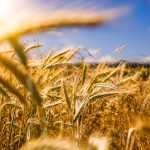
Written by Wandile Sihlobo, Agbiz chief economist
As the year draws to a close, it is worth reflecting on critical events that dominated the South African agricultural scene over the past year. There are three in particular that stood out for us.
Load-shedding
First, the intense and persistent load-shedding right from the start of the year was a significant challenge for South Africa’s agriculture and agribusinesses. The impact became apparent when one considers that all of South Africa’s horticulture – fruits and vegetables depends on irrigation that needs an adequate power supply. In crucial field crops, roughly 20% of maize, 15% of soybean, 34% of sugarcane, and nearly half of wheat are produced under irrigation. In red meat, poultry, piggery, wool, and dairy production, electricity is also heavily used across various processing activities. Similarly, agribusinesses and other food-producing businesses faced similar challenges in various downstream processing activities, such as milling, bakeries, abattoirs, wine processing, packaging, and animal vaccine production. Exporting agribusinesses, especially those where delays can be costly, such as fruits, red meat, and wine, were also worried about the port activities.
In the first quarter of the year, the economic impact of the load shedding was felt across the food, fibre and beverages value chains. Primary farmers and businesses searched for capital to invest in their own energy generation, and some experienced losses in their stock. In addition to the private efforts, the Department of Agriculture, Land Reform and Rural Development, Eskom management and organized agriculture formed an Agricultural National Energy Task Team. This Task Team introduced interventions to ease the load-shedding burden on farmers, such as load curtailment, expansion of the diesel rebate to the food value chain, and, most recently, the Agro-Energy Fund. The fact that we were also in a La Nina rainy season, in crops and horticulture helped to ease the demand for regular irrigation. Through these efforts and heavy investment in renewables and other energy generation measures, South African agriculture, along with the food, fibre and beverages value chains, managed to minimize the damage of load shedding and ensured a consistent supply of high-quality food for consumers.
Biosecurity
Second, the weaknesses of South Africa’s biosecurity system were a dominant challenge this year. Admittedly, biosecurity breaches are not uniquely South African and have become a significant challenge globally. We frequently hear of Foot and Mouth Disease (FMD) in cattle, African Swine Fever in pigs and Avian Influenza in poultry worldwide. However, very few countries have had to deal with the scale of these disease outbreaks almost simultaneously as South Africa has had to do over the past year.
Back in 2022, six of our nine provinces reported FMD outbreaks. By the start of 2023, the conditions hadn’t changed much, as we continued to see reported cases throughout the year. Also noteworthy is that at the end of 2022, we learned of the outbreaks of the African Swine Fever, which put the pig industry under additional pressure. This remains an ongoing challenge in the pig industry. Most recently, the focus has been on Avian Influenza, where more than a hundred commercial poultry facilities have reported cases. There have been significant losses in parent stock for breeders of layers and broilers, thus leading to imports of fertilized eggs to rebuild the parent stock flock decimated by the disease. The financial impact of this outbreak is evident in the recent losses announced by the major producers and the price increases of some products from a consumer perspective.
Regarding the cattle industry, the financial impact is also severe, and South African cattle products exports to some markets were suspended. In essence, as seen in the recent outbreaks, South Africa’s biosecurity breaches signal some serious capacity challenges in farm biosecurity measures and the country’s veterinary and related support services. This is mainly in the laboratories, control of the movement of livestock and vaccine production. Therefore, the South African government and organized agriculture and industry bodies should work closely together to address the country’s biosecurity challenges as they persist.
Congestion at ports
Lastly, the congestion at the ports is another aspect that dominated the conversation, especially in the last quarter of the year. For the first three quarters, the agricultural sector successfully collaborated with Transnet to keep exports flowing to export markets. South Africa’s agricultural exports amounted to US$10,2 billion in the first nine months, up 1% from the same period in 2022. But the last quarter exports are at risk, mainly the deciduous fruits and table grapes and wines in the Port of Cape Town, which is typically busy with agricultural exports this time of the year compared with other ports. This is an area that needs urgent intervention to support the growth of the sector. South Africa’s agricultural sector is export-oriented and depends on efficient and effective ports.
Conclusion
Overall, while there were numerous other challenges in the sector that we do not discuss in this report, the three points we discussed above were perhaps the most notable and cross-cutting across each commodity and its value chain. These factors also diverted attention from implementing fundamental policies and programmes such as the Agriculture and Agro-Processing Master Plan, and the stakeholders suddenly had to be in “crisis” mode instead of thinking about the long-term growth prospects and interventions to support such a vision. Going into 2024, the industry will have to refocus on the Master Plan and resolve the above-mentioned constraints, as it remains relevant and necessary to support the inclusive growth of South Africa’s agriculture.
The article first appeared in the Agbiz newsletter, 14 December 2023. Find the original article here.
Relevant Agribook pages include “Energy“, “Biosecurity” and “Exporting“.







